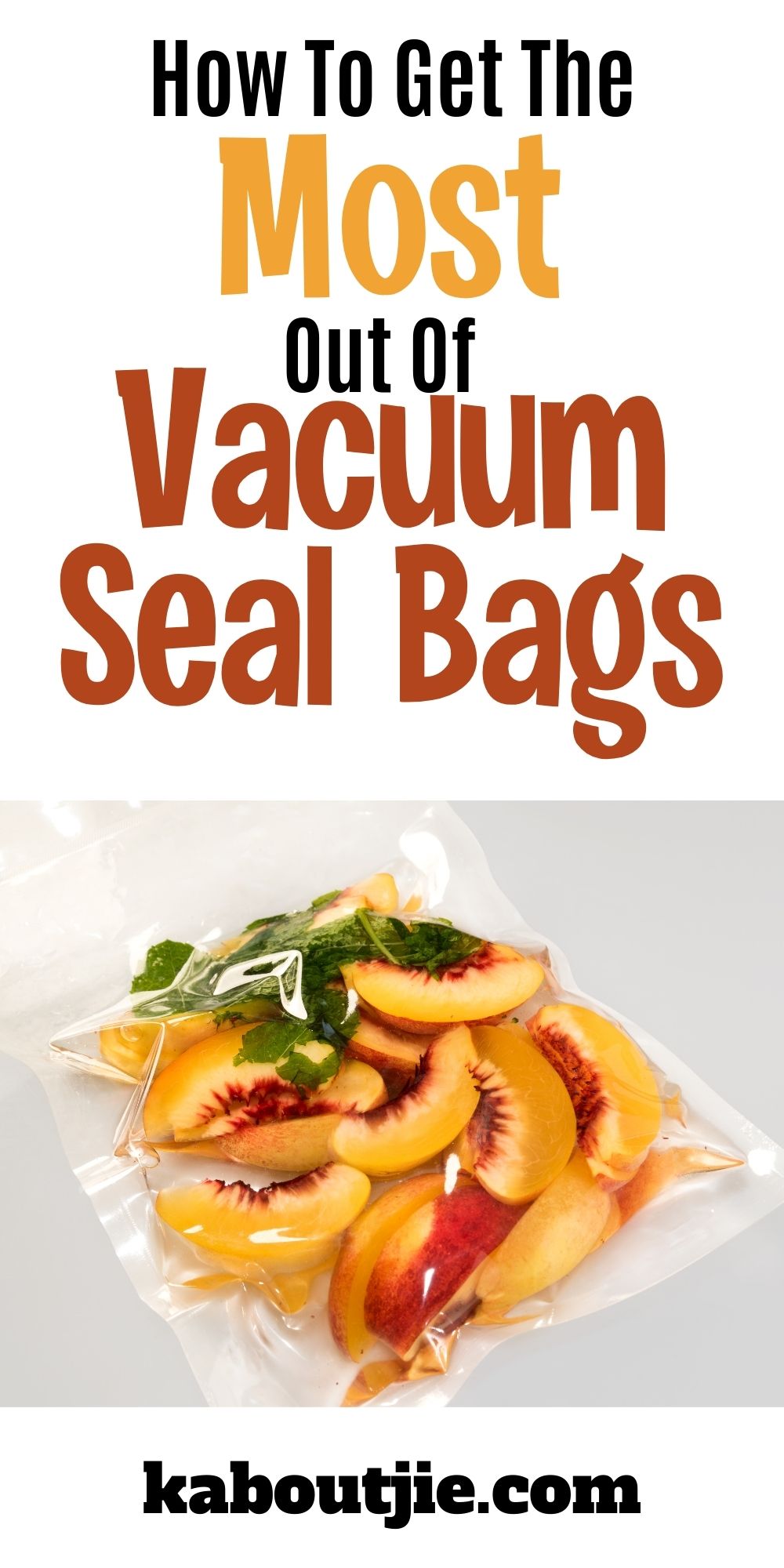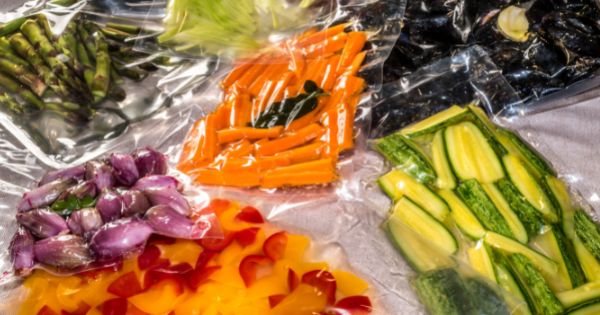Vacuum sealing is an excellent way to store food and keep it fresh. However, it’s frustrating when you don’t get the most out of your investment, especially when it comes to something as important as food preservation. Read on to find out everything you need about vacuum seal bags to get the most out of your food storage.

Choose High-Quality Vacuum Seal Bags
High-quality bags protect food from moisture and bacteria and ensure your food remains fresh and tastes better.
Here are some tips for finding high-quality vacuum sealer bags:
- Choose bags with thick layers: Some bags are made of 7 mil thick plastic and are 33% thicker than standard 5-layer bags, making them more puncture-resistant.
- Look for bags that are FDA-approved: There are well-known and trusted brands known for producing high-quality food-grade vacuum sealer bags that are made from BPA-free materials and use FDA-approved plastic.
- Check out the reviews: After all, these bags are designed to preserve your food longer and free from contaminants, so you want to ensure you’re getting a quality product.
Vacuum Seal Food Properly
A properly sealed bag is one way to get the most out of your food vacuum bags by keeping food fresh, extending its shelf life, and retaining its nutritional value.
However, there are a few things to keep in mind when vacuum sealing food.
Freeze Food First Before Sealing
Freezing prevents dangerous bacteria from thriving in your food. Not only does it prevent bacteria from growing, but also it preserves the flavor and texture of your food. So pop it in the freezer for a few hours, and rest assured that you’re taking a step toward fresher left-overs
Cuff the Bag Before Filling With Food
Fold the top of the bag to ensure that the sealing area stays clean and ready for sealing. If possible, keep the seal bags flat when filling them to get the most out of their suction and prevent air pockets.
Fill Just Enough per Bag
Don’t cram all your food inside a single bag. Instead, leave about 2-3 inches between the edge of the sealing area and the food. This ensures that you still have plenty of room for sealing without wrinkling the bag which can cause a bad seal.
Clean Produce Thoroughly Before Sealing It
Clean food thoroughly if you’re planning on vacuum sealing it. That means peeling, trimming, and washing any bad parts of your food items, such as:
- Soil and dirt on herb roots or other parts.
- Bruises and squashed parts of fruits and vegetables.
- Fish guts, gills, scales, and sharp fins.
- Unwanted bones and parts of meat and poultry.

Cover Sharp Points With Wax Paper
Wax paper acts as an extra layer of protection for your bags. They can withstand the sharp bones in meat and poultry, edges of beef jerkies, and dehydrated foods.
Here are the steps when using wax paper.
For sharp bones of meat and poultry:
- Cut the wax paper into circles. If possible, make sure the diameter of the circles is double or triple the size of the diameter of the bones to ensure that the bones are covered with wax paper.
- Put the centre of the circled wax paper atop the bone and gently work the edge of the wax paper around the bone. Make sure to give it a bit of pressure while doing so and repeat the same process on other bones as well. Once finished, you are now ready to seal them.
For sharp edges of beef jerkies and dehydrated foods:
- Cut the wax paper into rectangles. If possible, make sure the length and width of your rectangles are higher and wider than your beef jerky and dehydrated food. This ensures that all the pieces are covered and avoids any sharp points.
- Arrange beef jerky and dehydrated foods in a stack, or bundle them so you can easily wrap them with wax paper.
- Cover any sharp edges and apply a little pressure before sealing it.
Recycle Them
Recycle your vacuum sealer bags to help reduce the amount of plastic waste going to landfills. Plus, you’ll feel good knowing you’re doing your part in reducing waste and helping the environment. But, remember not to reuse bags that have been previously used with meat, fish, eggs, or cheese.
Cheese is made from milk, which is a protein that is notorious for being difficult to clean. Even if you wash your bags thoroughly, there’s no guarantee that you’ll be able to remove all the bacteria. In addition, avoid reusing oily, messy, and battered bags since they’re unlikely to work like they used to.
Here are some possible uses for recycling sealer bags:
- Plant Pots: If you’re looking for an inexpensive and eco-friendly way to pot your plants, recycled vacuum sealing bags are a great option. You can also paint shapes and figures to make them attractive. Don’t forget to snap pictures of your kids doing their artistic creations too!
- Crayon Storage: You can store crayons in a vacuum sealing bag. You can recycle used bags with zipper features so you can open and close them repeatedly.
- Temporary Storage Bags: Sealer bags make great temporary storage bags. Use a sealer bag if you need to store something away for a short time and don’t have a suitable container. Be sure to label the bag, so you know what’s inside.
So next time you reach for a sealer bag, think about how you can recycle it instead of throwing it away. With a little creativity, you can find all sorts of uses for these handy little bags.
Final Words
It’s no secret that keeping food fresh can be a challenge, especially if you have picky eaters at home. Vacuum sealing is the way to go if you’re looking for a way to keep your family’s food tasting great and last longer. Not only does it help preserve the quality of your food, but choosing quality vacuum seal bags can also save you money in the long run.
 Kaboutjie SA Mommy Blogs by Lynne Huysamen
Kaboutjie SA Mommy Blogs by Lynne Huysamen





i love the benefit of these bags but i dont have one yet. i would love to get one